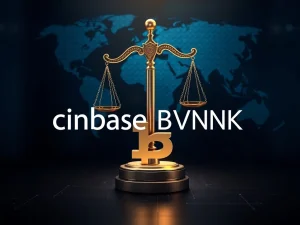Unlocking Trust: RWA Tokenization Backing Relies on Law, Not Just Code

The market for real-world assets (RWAs) has become a significant focus in the cryptocurrency space, with many entities exploring tokenization. While some reports suggest substantial growth, industry experts note that the sector is still developing. Slow adoption often links to outdated regulations, limited access, and misunderstandings about how tokenized assets are truly backed. This brings us to a core question: how do token issuers ensure the crucial 1:1 peg between the digital token and the underlying real-world asset? It turns out the answer involves more than just technology.
Understanding RWA Backing: More Than Just Technology
Ensuring proper RWA backing is vital because, unlike some crypto tokens driven purely by speculation, tokenized assets represent tangible value. Adam Levi, co-founder of Backed, highlights this distinction. He states that for financial RWAs like tokenized equities, trust depends entirely on the product structure, issuer transparency, and regulation.
Levi emphasizes that the backing of these assets isn’t primarily a technology issue. It’s fundamentally a legal and financial one. The guarantee comes from the issuer’s binding legal obligation to maintain full backing and transparent issuance and redemption processes, all governed by clear regulations.
Technology, including secure smart contracts, platforms, and custody solutions, is essential for functionality. However, trust in financial products ultimately derives from enforceable legal commitments under strong regulatory frameworks. The foundation is legal, not solely code.
Key Questions Before Investing in Tokenized Assets
Adam Levi suggests potential investors ask critical questions when evaluating financial RWA tokens:
- What is the legal structure of the token?
- What are the issuer’s regulatory licenses and compliance standards?
- How is the underlying asset held in custody?
- What are the specific mechanisms for issuance and redemption?
- How transparent are the issuer’s operations and audits?
These questions help uncover the legal and operational framework that underpins the token’s value, which is crucial for understanding the true nature of the RWA backing.
Challenges and the Role of RWA Tokenization Providers
RWA backing presents challenges, similar to those in traditional investments. Ross Shemeliak, co-founder of Stobox, notes that tokenization is simply an investment method. Responsibility currently rests with RWA tokenization providers.
These providers conduct due diligence, reviewing offering memorandums, underlying assets, and legal restrictions. However, Shemeliak points out that this process isn’t a complete guarantee against risks, including potential scams, due to verification complexities.
The Promise of Data-Rich Tokenized Assets
One proposed solution to enhance trust and transparency is the concept of data-rich tokenized assets. According to Shemeliak, these tokens don’t just represent ownership. They embed or link to structured, dynamic data about the asset directly on the blockchain. This data can include valuation, legal status, and other relevant details.
This approach creates a new level of transparency, interoperability, and investor confidence often missing in traditional securities or early-stage tokens. Examples of technologies supporting this include Chainlink’s Proof of Reserve and Cross-Chain Interoperability Protocol, utilized by platforms like Backed Finance, Maple Finance, and Centrifuge.
Jurisdictions and the Future of RWA Tokenization
The choice of jurisdiction is another critical factor for RWA tokenization deals. Stobox research identifies the British Virgin Islands, Wyoming (US), Liechtenstein, Singapore, and the Marshall Islands among the top locations based on regulatory quality and efficiency.
Interestingly, while Singapore and Luxembourg are highly rated for regulation, they are currently underutilized for tokenization special purpose vehicles, accounting for a small percentage of global deals. This suggests potential for growth in these regions as the market matures.
Conclusion: Trusting RWA Tokenization
Ensuring the 1:1 peg for RWA tokenization is a complex endeavor. It relies less on the blockchain code itself and more on robust legal frameworks, regulatory compliance, and the transparency of token issuers. While technology provides the platform for efficiency and transparency, the underlying trust comes from enforceable legal obligations and thorough due diligence. As the market for real-world assets evolves, the focus on these foundational elements will be key to driving broader adoption and investor confidence in tokenized assets.







